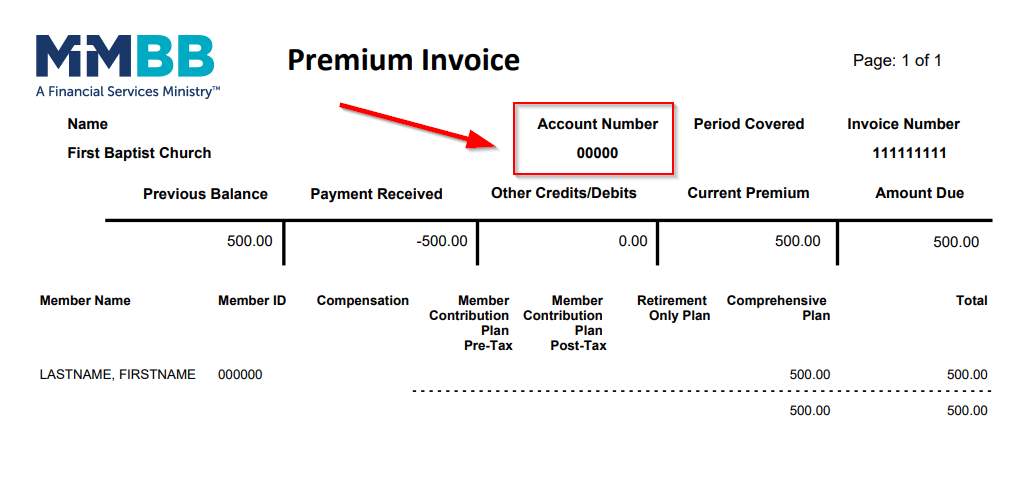The Markets (as of market close January 31, 2023)
January proved to be a bumpy ride for investors, with stocks ultimately ending higher to begin the new year, despite concerns that the economy may be headed toward a significant slowdown or even a recession. Nevertheless, each of the benchmark indexes listed here posted solid gains in January, led by the Nasdaq as tech stocks rebounded from a rough 2022. Stocks began the month by climbing higher over the first two weeks of January. However, equities lagged mid-month, only to rebound at the end of January closing out the month on a positive note.
Several market sectors posted solid gains in January. Consumer discretionary and communication services increased by about 14.0%. Real estate, materials, and information technology gained about 9.0%. On the other hand, health care, utilities, and consumer staples lost ground.
Recent economic data indicated that inflation may have peaked. The consumer price index and the personal consumption expenditures price index for December revealed a drop in the annual rate of price increases. However, the Federal Reserve and most central banks continued to stress further tightening. It is expected the Federal Open Market Committee will hike interest rates 25 basis points following its meeting on February 1. Wall Street remained hopeful that the economy can weather more interest-rate hikes. Fourth-quarter gross domestic product increased 2.9%, a slower pace of growth than in the third quarter. For 2022, GDP increased 2.1%. Several of the world's leading economic indicators slowed in the second half of 2022, curtailing momentum leading into 2023.
Manufacturing activity decelerated, with industrial production falling over the past several months. Durable goods orders rose in December, driven largely by a jump in transportation. Excluding transportation, durable goods orders decreased 0.1%. The purchasing managers' index declined as output levels fell amid weak customer demand. High interest rates and economic uncertainty led to reduced customer spending.
Fourth-quarter corporate earnings were generally favorable, however not as strong as the same period last year. Of the roughly 100 S&P companies that have reported Q4 results, total earnings are down about 6.0% compared to a year ago and are expected by be down 7.2% overall.
Bond prices rose in January, pulling yields lower. Ten-year Treasury yields fell 32 basis points. The Treasury yield curve is currently inverted, with the yield on the one-month bond at about 4.53%, while the 10-year bond yield sits at 3.52%. An inverted yield curve is often seen as an indicator of economic weakness. The dollar slid lower against a basket of world currencies. Gold prices rose nearly $114.00 per ounce in January, advancing for the second consecutive month.
Crude oil prices declined in January for the third straight month. Prices for U.S. and global crude oil notched their largest monthly decreases since November 2022. Oil prices were volatile in January, opening the month lower, but rising on optimism of China's increased demand. However, prices slipped lower toward the end of January as overall demand appeared to wane. The retail price of regular gasoline was $3.489 per gallon on January 30, $0.398 more than December's price, and $0.121 higher than a year ago.
MARKET SUMMARY
| MARKET/INDEX |
2022 CLOSE |
PRIOR MONTH |
AS OF 01/31 |
MONTHLY CHANGE |
YTD CHANGE |
| DJIA |
33,147.25 |
33,147.25 |
34,086.04 |
2.83% |
2.83% |
| NASDAQ |
10,466.48 |
10,466.48 |
11,584.55 |
10.68% |
10.68% |
| S&P 500 |
3,839.50 |
3,839.50 |
4,076.60 |
6.18% |
6.18% |
| RUSSELL 2000 |
1,761.25 |
1,761.25 |
1,931.94 |
9.69% |
9.69% |
| GLOBAL DOW |
3,702.71 |
3,702.71 |
3,990.37 |
7.77% |
7.77% |
| FED. FUNDS |
4.25%-4.50% |
4.25%-4.50% |
4.25%-4.50% |
0 bps |
0 bps |
| 10-YEAR TREASURIES |
3.87% |
3.87% |
3.52% |
-35 bps |
-35 bps |
| US DOLLAR-DXY |
103.48 |
103.48 |
102.08 |
-1.35% |
-1.35% |
| CRUDE OIL-CL=F |
$80.41 |
$80.41 |
$79.08 |
-1.65% |
-1.65% |
| GOLD-GC=F |
$1,829.70 |
$1,829.70 |
$1,944.00 |
6.25% |
6.25% |
Chart reflects price changes, not total return. Because it does not include dividends or splits, it should not be used to benchmark performance of specific investments.
Latest Economic Reports
- Employment: Job growth remained strong in December with the addition of 233,000 new jobs following a net downward revision of 28,000 in the prior two months. Despite federal interest rate hikes aimed at slowing the economy and inflation, there is little evidence that the supply of labor is peaking. Overall, employment rose by 4.5 million in 2022 (an average monthly gain of 375,000), less than the increase of 6.7 million in 2021 (an average monthly gain of 562,000). In December, notable job gains occurred in leisure and hospitality, health care, construction, and social assistance. The unemployment rate edged down 0.1 percentage point to 3.5%. The number of unemployed persons decreased 278,000 to 5.7 million in December. The employment-population ratio increased by 0.2 percentage point over the month to 60.1%. The labor force participation rate was little changed at 62.3%. Both measures have shown little net change since early 2022. In December, average hourly earnings increased by $0.09, or 0.3%, to $32.82. Over the past 12 months ended in December, average hourly earnings rose by 4.6%. The average workweek decreased by 0.1 hour to 34.3 hours in December, down from 34.4 hours in November.
- There were 186,000 initial claims for unemployment insurance for the week ended January 21, 2023. The total number of workers receiving unemployment insurance was 1,675,000. By comparison, over the same period last year, there were 222,000 initial claims for unemployment insurance, and the total number of claims paid was 1,787,000.
- FOMC/interest rates: The Federal Open Market Committee met on the last two days of January, however the results of that meeting will not be released until the end of the first day of February, after this report has been released. The results of that meeting will be detailed in the next weekly report and in the February monthly report.
- GDP/budget: The economy, as measured by gross domestic product, accelerated at an annual rate of 2.9% in the fourth quarter of 2022, according to the initial, or advance, estimate. GDP increased 3.2% in the third quarter after falling in the first and second quarters, 1.6% and 0.6%, respectively. Consumer spending, as measured by the personal consumption expenditures index, rose 2.1% in the fourth quarter compared to an increase of 2.3% in the third quarter. Spending on services rose 2.6% in the fourth quarter compared with a 3.7% increase in the third quarter. Consumer spending on goods actually increased 1.1% in the fourth quarter after decreasing 0.4% in the third quarter. Fixed investment fell 6.7% in the fourth quarter (-3.5% in the third quarter), pulled lower by a 26.7% drop in residential fixed investment. Nonresidential (business) fixed investment rose 0.7% in the fourth quarter. Exports fell 1.3% in the fourth quarter, compared with a 14.6% increase in the previous quarter. Imports, which are a negative in the calculation of GDP, fell 4.6% in the fourth quarter, following a 7.3% decline in the third quarter. Consumer prices increased 3.2% in the fourth quarter (4.3% in the third quarter). Excluding food and energy, consumer prices advanced 3.9% in the fourth quarter (4.7% in the third quarter). In 2022, GDP increased 2.1%, compared with an increase of 5.9% in 2021. The PCE price index increased 6.2%, compared with an increase of 4.0% in 2021. Excluding food and energy prices, the PCE price index increased 5.0%, compared with an increase of 3.5% in 2021.
- December saw the federal budget deficit come in at $85.0 billion, $163.5 billion less than the November deficit but $62.7 billion above the December 2021 deficit. The deficit for the first three months of fiscal year 2023, at $421.4 billion, is $43.7 billion more than the first three months of the previous fiscal year. In December, government receipts totaled $454.9 billion and $1,025.6 trillion for the current fiscal year. Government outlays were $539.9 billion in December and $1,447.0 trillion through the first three months of fiscal year 2023. By comparison, receipts in December 2021 were $486.7 billion and $1,051.9 trillion through the first three months of the last fiscal year. Expenditures were $508.0 billion in December 2021 and $1,429.6 trillion for the year.
- Inflation/consumer spending: Data from December shows that the peak of rising inflation may be behind us. According to the latest Personal Income and Outlays report, personal income rose 0.2% and disposable personal income rose 0.3% in December after each increased 0.3% in November. Consumer spending fell 0.2% in December after declining 0.1% the previous month. Consumer prices inched up 0.1% in December, the same advance as in November. Excluding food and energy, consumer prices increased 0.3% in December. Consumer prices have risen 5.0% since December 2021, 0.5 percentage point less than the 12-month period ended in November 2021.
- The Consumer Price Index dipped 0.1% in December after inching up 0.1% in November. Over the 12 months ended in December, the CPI rose 6.5%, down from 7.1% in November, falling to its lowest 12-month advance since October 2021. Excluding food and energy prices, the CPI rose 0.3% in December and 5.7% for the year ended in December. Although energy prices fell 4.5% in December, food prices rose 0.3% and prices for shelter increased 0.8%. For the 12 months ended in December, energy prices increased 7.3%, while food prices rose 10.4%.
- Prices that producers receive for goods and services dropped 0.5% in December after rising 0.2% in November. Producer prices increased 6.2% for the 12 months ended in December after rising 10.0% in 2021. In December, the decrease in the PPI index can be attributed to a 1.6% decline in prices for goods. In contrast, prices for services rose 0.1%. Producer prices less foods, energy, and trade services rose 0.1% in December after increasing 0.3% in the previous month. Prices less foods, energy, and trade services advanced 4.6% in 2022, following a 7.0% rise in 2021.
- Housing: Sales of existing homes decreased for the eleventh consecutive month after declining 1.5% in December. Existing home sales dropped 34.0% from December 2021. Limited inventory and rising mortgage rates contributed to the decrease in existing-home sales. The median existing-home price was $366,900 in December, lower than the November price of $372,000 but 2.3% higher than the December 2021 price of $358,800. Unsold inventory of existing homes represents a 2.9-month supply at the current sales pace, down from the November pace of 3.3 months but higher than the 1.7-month supply in December 2021. Sales of existing single-family homes dropped 1.1% in December and 33.5% from December 2021. The median existing single-family home price was $372,700 in December, down from $378,700 in November but higher than the December 2021 price of $365,300.
- New single-family home sales advanced in December, climbing 2.3% and marking the second consecutive monthly increase. However, sales are down 26.6% from December 2021. An estimated 644,000 new homes were sold in 2022, 16.4% below the 2021 figure of 771,000. The median sales price of new single-family houses sold in December was $462,100 ($459,000 in November). The December average sales price was $528,400 ($528,600 in November). The inventory of new single-family homes for sale in December represented a supply of 9.0 months at the current sales pace, down marginally from the November estimate of 9.2 months.
- Manufacturing: Industrial production declined 0.7% in December, following a 0.6% decrease in November. Industrial production has not increased since July 2022. Manufacturing decreased 1.3% in December (-1.1% in November), mining fell 0.9%, while utilities rose 3.8%. Over the 12 months ended in December, total industrial production was 1.6% above its year-earlier reading.
- December saw new orders for durable goods increase 5.6%, after decreasing 1.7% in November. Durable goods orders advanced four out of five months with the December advance. Excluding transportation, new orders increased 0.2% in December. Excluding transportation, new orders decreased 0.1%. Excluding defense, new orders increased 6.3%. Transportation equipment, also up four of the last five months, contributed to the December increase, rising 16.7%. Also of note, new orders for nondefense aircraft and parts jumped 115.5% in December after falling 30.7% the previous month. New orders for nondefense capital goods increased 19.2% in December, while new orders for defense capital goods slid 2.8%.
- Imports and exports: December saw import prices climb 0.4%, the first monthly increase since June 2022. Prices for U.S. imports rose 3.5% over the past year, driven by higher fuel and nonfuel prices. Import fuel prices increased 0.6% in December, the first monthly increase since June 2022. Nonfuel import prices climbed 0.4% in December, the first monthly increase since April 2022. Nonfuel import prices rose 1.9% in 2022, the smallest annual advance since 2020. Export prices declined 0.3% in November and have not recorded a 1-month increase since rising 1.1% in June 2022. Prices for exports fell 2.6% in December after falling 0.4% in November. Export prices have not increased on a monthly basis since a 1.1% advance in June 2022. Exports rose 5.0% over the past 12 months, the smallest over-the-year advance since a 2.5% increase in January 2021.
- The international trade in goods deficit was $90.3 billion in December, up $7.3 billion, or 8.8%, from November. Exports of goods for December were $166.8 billion, $2.6 billion, or 1.6%, less than November exports. Imports of goods were $257.1 billion in December, $4.7 billion, or 1.9%, more than in November. The December drop in exports was largely attributable to a 1.7% decline in consumer goods and a 5.1% decrease in industrial supplies. In December, auto imports were up 9.4%, while imports of consumer goods rose 6.6%.
- The latest information on international trade in goods and services, released January 5, is for November and shows that the goods and services trade deficit was $61.5 billion, a decrease of $16.3 billion (-21.0%) from the October deficit. November exports were $251.9 billion, $5.1 billion, or 2.0%, less than October exports. November imports were $313.4 billion, $21.5 billion, or 6.4%, less than October imports. Year to date, the goods and services deficit increased $120.1 billion, or 15.7%, from the same period in 2021. Exports increased $439.4 billion, or 18.9%. Imports increased $559.5 billion, or 18.1%.
- International markets: China's zero-COVID policy, in place for much of 2022, slowed that country's economy, which grew by just 3.0% in 2022, far below the official target. However, the Chinese government's abrupt end to that policy at the end of 2022 raised hope for 2023. Inflation may have reached its peak, but most central banks aren't ready to end interest-rate hikes — with the exception of Canada. The Bank of Canada indicated it will likely hold off on any further interest rate increases following the last 25-basis point rate hike, which sent interest rates up to a 15-year high of 4.5%. Conversely, the European Central Bank has maintained that inflation remains too high and will continue to raise interest rates. Eurozone inflation reached 9.2% in December 2022. Manufacturing has slowed in many countries. Germany's purchasing managers' index slowed to 47.1 (a reading under 50.0 indicates retraction), Japan's PMI was 48.9, the United Kingdom's PMI fell to 45.3, while the Eurozone's PMI dipped to 47.8. For January, the STOXX Europe 600 Index added 4.1%; the United Kingdom's FTSE advanced 2.6%; Japan's Nikkei 225 Index gained 4.7%; and China's Shanghai Composite Index rose 4.5%.
- Consumer confidence: The Conference Board Consumer Confidence Index® decreased in January, following an upwardly revised increase in December 2022. The index stands at 107.1, down from 109.0 in December. The Present Situation Index, based on consumers' assessment of current business and labor market conditions, rose to 150.9 in January, up from 147.4 in the previous month. The Expectations Index — based on consumers' short-term outlook for income, business, and labor market conditions — fell to 77.8 in January, down from 83.4 in December. According to the Conference Board's report, an Expectations Index reading below 80.0 could signal a recession within the next year.
Eye on the Month Ahead
Inflationary pressures showed regression in January, which could prompt the Federal Reserve to scale back interest-rate hikes beginning on the first of February, following the Committee's next meeting. As inflation waned, so did the economy. Close attention will be paid to the labor report and other inflation data, including the consumer price index and the personal consumption expenditures price index. The world economy will get a boost if China remains open to trade, despite growing COVID cases.
Data sources: Economic: Based on data from U.S. Bureau of Labor Statistics (unemployment, inflation); U.S. Department of Commerce (GDP, corporate profits, retail sales, housing); S&P/Case-Shiller 20-City Composite Index (home prices); Institute for Supply Management (manufacturing/services). Performance: Based on data reported in WSJ Market Data Center (indexes); U.S. Treasury (Treasury yields); U.S. Energy Information Administration/Bloomberg.com Market Data (oil spot price, WTI, Cushing, OK); http://www.goldprice.org (spot gold/silver); Oanda/FX Street (currency exchange rates). News items are based on reports from multiple commonly available international news sources (i.e. wire services) and are independently verified when necessary with secondary sources such as government agencies, corporate press releases, or trade organizations. All information is based on sources deemed reliable, but no warranty or guarantee is made as to its accuracy or completeness. Neither the information nor any opinion expressed herein constitutes a solicitation for the purchase or sale of any securities, and should not be relied on as financial advice. Past performance is no guarantee of future results. All investing involves risk, including the potential loss of principal, and there can be no guarantee that any investing strategy will be successful.
The Dow Jones Industrial Average (DJIA) is a price-weighted index composed of 30 widely traded blue-chip U.S. common stocks. The S&P 500 is a market-cap weighted index composed of the common stocks of 500 largest, publicly traded companies in leading industries of the U.S. economy. The NASDAQ Composite Index is a market-value weighted index of all common stocks listed on the NASDAQ stock exchange. The Russell 2000 is a market-cap weighted index composed of 2,000 U.S. small-cap common stocks. The Global Dow is an equally weighted index of 150 widely traded blue-chip common stocks worldwide. The U.S. Dollar Index is a geometrically weighted index of the value of the U.S. dollar relative to six foreign currencies. Market indices listed are unmanaged and are not available for direct investment.
IMPORTANT DISCLOSURES
Broadridge Investor Communication Solutions, Inc. does not provide investment, tax, legal, or retirement advice or recommendations. The information presented here is not specific to any individual’s personal circumstances.
To the extent that this material concerns tax matters, it is not intended or written to be used, and cannot be used, by a taxpayer for the purpose of avoiding penalties that may be imposed by law. Each taxpayer should seek independent advice from a tax professional based on his or her individual circumstances.
These materials are provided for general information and educational purposes based upon publicly available information from sources believed to be reliable — we cannot assure the accuracy or completeness of these materials. The information in these materials may change at any time and without notice.








